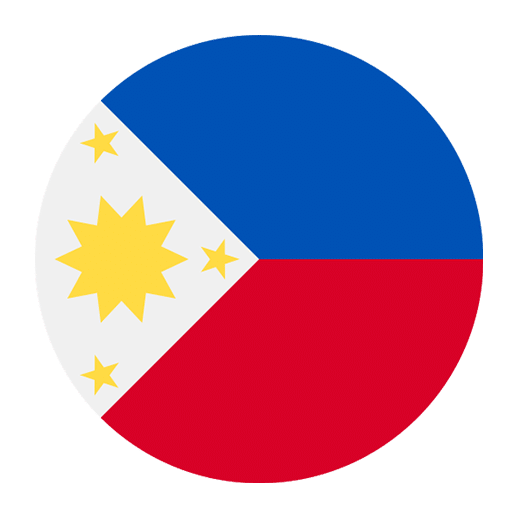Globalization, the process by which businesses or other organizations develop international influence or start operating on an international scale, has had a profound impact on languages worldwide. The Tagalog language, one of the major languages of the Philippines, has not been immune to these influences. As a language learner, understanding the nuances of how globalization has affected Tagalog can provide deeper insights into its contemporary usage and evolution.
Historical Context of Tagalog
Tagalog, the basis for the national language of the Philippines, Filipino, has a rich history that dates back centuries. It has been influenced by various cultures and languages, including Malay, Spanish, Chinese, and American English. These influences are a testament to the Philippines’ long history of trade, colonization, and interaction with other cultures.
Before diving into the effects of globalization, it’s essential to acknowledge these historical layers. Spanish colonization, for example, left a significant imprint on Tagalog vocabulary, with many Spanish loanwords still in use today. The American occupation introduced English, which has since become a co-official language and a medium of instruction in schools, further intertwining with Tagalog.
Globalization and Language Evolution
Globalization has accelerated the pace of language evolution in ways that were previously unimaginable. Here are some of the key ways it has impacted the Tagalog language:
1. Lexical Borrowing
One of the most noticeable impacts of globalization on Tagalog is the influx of foreign words. English, being the global lingua franca, has contributed significantly to the Tagalog lexicon. This phenomenon, known as lexical borrowing, is particularly evident in technology, business, and pop culture. Terms like “kompyuter” (computer), “selpon” (cell phone), and “internet” are direct borrowings from English.
This borrowing is not limited to nouns but extends to verbs and adjectives as well. For example, “mag-apply” (to apply) and “mag-download” (to download) showcase how English verbs are adapted into the Tagalog grammatical framework.
2. Code-Switching
Another significant impact is the prevalence of code-switching, where speakers alternate between Tagalog and English within a single conversation or even a single sentence. This phenomenon, often termed “Taglish,” is particularly common in urban areas and among younger generations.
Code-switching serves various communicative purposes. It can signal social identity, convey nuances that one language alone might not capture, or simply fill lexical gaps. For instance, a speaker might say, “I’ll go to the tindahan (store) later,” seamlessly blending English and Tagalog to suit the context and audience.
3. Media and Pop Culture
The global reach of media and pop culture has also shaped Tagalog. International films, TV shows, music, and social media platforms expose Filipinos to a constant stream of English content. As a result, English idioms, slang, and expressions often find their way into everyday Tagalog speech.
This influence is bidirectional. Filipino culture, music, and films also reach global audiences, showcasing the Tagalog language and its hybrid forms. Platforms like YouTube and TikTok have become spaces where Tagalog is used creatively, often mixed with English, further normalizing and spreading code-switching practices.
4. Education and Technology
The role of education and technology in language evolution cannot be overstated. English is the primary medium of instruction in many Philippine schools, especially for subjects like science and mathematics. This emphasis on English proficiency can sometimes overshadow the use of Tagalog, particularly in academic and professional settings.
Technology, on the other hand, has made learning and accessing multiple languages easier than ever. Language learning apps, online courses, and digital dictionaries allow for the simultaneous acquisition of Tagalog and English. However, this ease of access also means that English often becomes the default, especially in digital communication.
Socio-Cultural Implications
The linguistic changes brought about by globalization have broader socio-cultural implications. These changes reflect and influence identity, social dynamics, and even national policies.
1. Identity and Cultural Pride
For many Filipinos, the ability to speak both Tagalog and English fluently is a point of pride. It reflects a modern, globalized identity that is both rooted in local culture and open to international influences. However, this dual identity can also create tension. Some purists argue that the influx of English dilutes the purity of Tagalog and threatens cultural heritage.
On the flip side, the blending of languages can also be seen as a testament to the resilience and adaptability of Filipino culture. It showcases an ability to integrate external influences while maintaining a unique cultural identity.
2. Social Stratification
Language can also be a marker of social stratification. Proficiency in English is often associated with higher socio-economic status, better educational opportunities, and professional success. Conversely, those who are more comfortable in Tagalog or regional languages may find themselves at a disadvantage in certain social and professional contexts.
This stratification can perpetuate inequalities, making it crucial for language policies to promote bilingualism in a way that values both Tagalog and English equally.
3. Language Policy and Education
The Philippine government has made efforts to address these issues through language policies that promote both Filipino (based on Tagalog) and English. The Bilingual Education Policy, for example, mandates the use of Filipino and English as mediums of instruction in schools. This policy aims to balance the need for global competitiveness with the preservation of national identity.
However, the implementation of such policies is often challenging. There is ongoing debate about the best approach to bilingual education and the role of regional languages in the curriculum.
The Future of Tagalog in a Globalized World
As globalization continues to shape the linguistic landscape, the future of Tagalog will likely involve further hybridization and adaptation. This evolution will be influenced by various factors, including technological advancements, migration patterns, and international relations.
1. Technological Integration
Technology will continue to play a pivotal role in the evolution of Tagalog. From language learning apps to translation software, technological tools will facilitate the acquisition and use of Tagalog alongside other languages. Social media platforms will remain spaces for linguistic experimentation and innovation.
However, there is also a need for technology to support the preservation and promotion of Tagalog. This includes developing digital resources in Tagalog, promoting its use in online content, and leveraging technology to document and study the language.
2. Migration and Diaspora
The Filipino diaspora, spread across the globe, also plays a significant role in the future of Tagalog. Overseas Filipino Workers (OFWs) and immigrants bring their language and culture to their host countries, creating communities where Tagalog is spoken and taught.
These diaspora communities contribute to the global spread of Tagalog and its hybrid forms. They also serve as bridges between cultures, facilitating cross-cultural exchange and understanding.
3. Policy and Advocacy
The future of Tagalog will also depend on effective language policies and advocacy efforts. This includes promoting bilingual education, supporting linguistic research, and creating platforms for the use and celebration of Tagalog.
Advocacy efforts can also focus on raising awareness about the importance of linguistic diversity and the need to preserve and promote Tagalog in a globalized world.
Conclusion
The impact of globalization on the Tagalog language is multifaceted, encompassing lexical borrowing, code-switching, media influence, and educational practices. These changes reflect broader socio-cultural dynamics and have significant implications for identity, social stratification, and language policy.
As language learners, understanding these dynamics can deepen our appreciation of Tagalog and its evolution. It also highlights the importance of promoting linguistic diversity and supporting efforts to preserve and promote Tagalog in a globalized world.
In a world that is increasingly interconnected, the ability to navigate multiple languages and cultures is a valuable skill. By embracing the changes brought about by globalization while remaining rooted in local culture, we can create a more inclusive and dynamic linguistic landscape.

